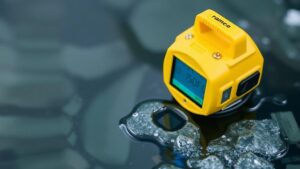How to Recover Antique Locks, Keys, and Hardware From Historic Sites
How to Recover Antique Locks, Keys, and Hardware From Historic Sites
The recovery of antique locks, keys, and hardware from historic sites is a critical aspect of preservation archaeology and heritage conservation. This process not only facilitates the understanding of historical contexts but can serve as a valuable conduit for cultural and artistic expressions from the past. The following sections delve into methodologies, best practices, and respectful ways to recover and preserve these artifacts.
Understanding the Importance of Recovery
Antique locks, keys, and hardware represent more than mere functional items; they are tangible connections to our past. Recovering these artifacts allows historians and archaeologists to piece together the everyday lives of individuals from bygone eras. According to a study by the Smithsonian Institution, over 75% of American households in the 19th century used some form of locked security, showcasing the historical significance of these items.
Legal and Ethical Considerations
Before embarking on the recovery of items from historic sites, it is imperative to understand the legal frameworks governing archaeological excavations. In many countries, laws such as the Archaeological Resources Protection Act (ARPA) in the United States require permits and adherence to local regulations. Engaging with local heritage organizations and stakeholders is crucial for ensuring compliance and respect for the site’s cultural significance.
- Check with local archaeological jurisdictions.
- Engage with preservation societies and local historians.
- Obtain any necessary permits before conducting recovery work.
Field Recovery Techniques
Recovering antique locks and keys involves a meticulous approach that balances excavation techniques with respect for the site. Here are several methods employed by professionals:
- Site Survey: Conducting an initial site survey to identify areas of potential artifact concentration. This often involves a combination of historical research and surface collecting.
- Test Excavation: Small test pits should be dug to assess the depth and density of artifacts, allowing for the preservation of as much context as possible.
- Screening: Using hardware mesh to sift through soil and sediment, ensuring small artifacts like keys are not overlooked.
For example, during a project at the historic Fort Ticonderoga in New York, archaeologists employed these methods to recover over 100 intact locks and keys, providing insight into the forts security measures throughout different military occupations.
Cleaning and Preservation Techniques
Once recovered, locks and keys require careful cleaning and conservation to ensure their longevity. Here are steps to follow:
- Initial Cleaning: Wet them with distilled water and use a soft brush to remove superficial dirt.
- Rust Treatment: For metal items, an application of a rust treatment solution may be necessary to prevent further oxidation.
- Coating: If appropriate, a clear conservation sealant can be applied to provide protection against the elements.
Documenting the Recovery Process
Proper documentation is essential in the recovery of antique locks and keys. This includes:
- Photographic records of the excavation process.
- Detailed notes on the context and location of each recovery.
- Cataloguing items in a database for future reference.
For example, the archaeologists working at Colonial Williamsburg used a comprehensive documentation protocol, which allowed for academic publications and public exhibitions, showcasing their findings effectively.
Case Studies and Real-World Applications
Several projects illustrate the best practices for recovering antique locks and keys:
- The Jamestown Rediscovery Project: This ongoing archaeological endeavor has recovered over 40 locks, shedding light on early settler security practices.
- The Archaeological Excavation at St. Augustine: This site has yielded numerous hardware artifacts that assist historians in understanding colonial life in Florida.
Conclusion: Best Practices for Recovery
Recovering antique locks, keys, and hardware from historic sites requires a delicate balance of technique, ethical responsibility, and thorough documentation. By adhering to established laws and guidelines, using effective recovery methods, and documenting findings, individuals can contribute significantly to our understanding of historical contexts.
For enthusiasts and professionals alike, engaging with these processes not only honors the past but also enriches our collective heritage and future understanding. As these artifacts often serve as conversation pieces in museums or academic spheres, their recovery is a vital endeavor worthy of thoughtful execution.


